jamus peek
Sr. Member
- Joined
- May 13, 2014
- Messages
- 373
- Reaction score
- 334
- Golden Thread
- 0
- Primary Interest:
- All Treasure Hunting
- #1
Thread Owner
Nothing I see says worked by man...

Jamus, here are pictures of an Adz. An Adz is different from a Celt in the Bit will have an up slope to it and the Bit on a Celt will meet in the middle.
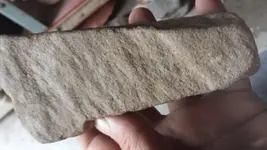
The "bit has chips or wear"? That rock has no bit and is nothing more than a creek rock. Not trying to beat you up but that's a rock. Keep lookin
I feel your pain / struggle! I see that kind of rock/ stone here a lot! And although it may be shaped like something Native American it's not! Know why.. Because if you bang it on another rock its gonna break and that tells me it's not a very useful resource for someone to take all their time to make long ago! Hope this helps!
Once you see the workmanship in a celt you wiull have no doubt about what you have. Though I have seen some rough ones of flint. The material you have would never have been used either unless it was a large mortar and pestle. Keep looking are you finding any flint?
I feel your pain / struggle! I see that kind of rock/ stone here a lot! And although it may be shaped like something Native American it's not! Know why.. Because if you bang it on another rock its gonna break and that tells me it's not a very useful resource for someone to take all their time to make long ago! Hope this helps!
Thanks for replying. On a ground stone item what man altered work are you looking for?
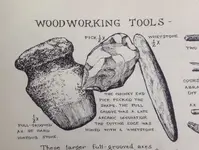
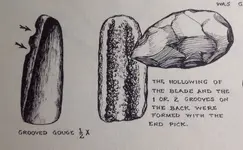
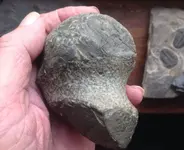
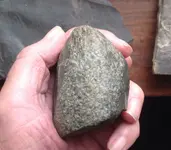
OK, jamus, this info should really help. Hardstone artifacts were fashioned in two steps. Pecking
into shape, and then grinding to a polish. If an artifact has been brought to 100% polish, the pecking marks may no longer be visible. But most times, some pecking is still going to be visible. In the first two photos, you see how an end pick was used to shape the artifact via pecking. In Photo 3 and 4, we see the head poll end of a broken full groove axe. See all the peck marks? That is what you should see most of the time. In photo 5 and 6, you see a double groove adze showing many pecking scars. Fully complete, but not brought to a polish. The last two photos show finished adzes with polish, but you can still see some of the pecking that was used to shape those tools. These are the things you look for....
View attachment 1375110View attachment 1375111View attachment 1375112View attachment 1375113
